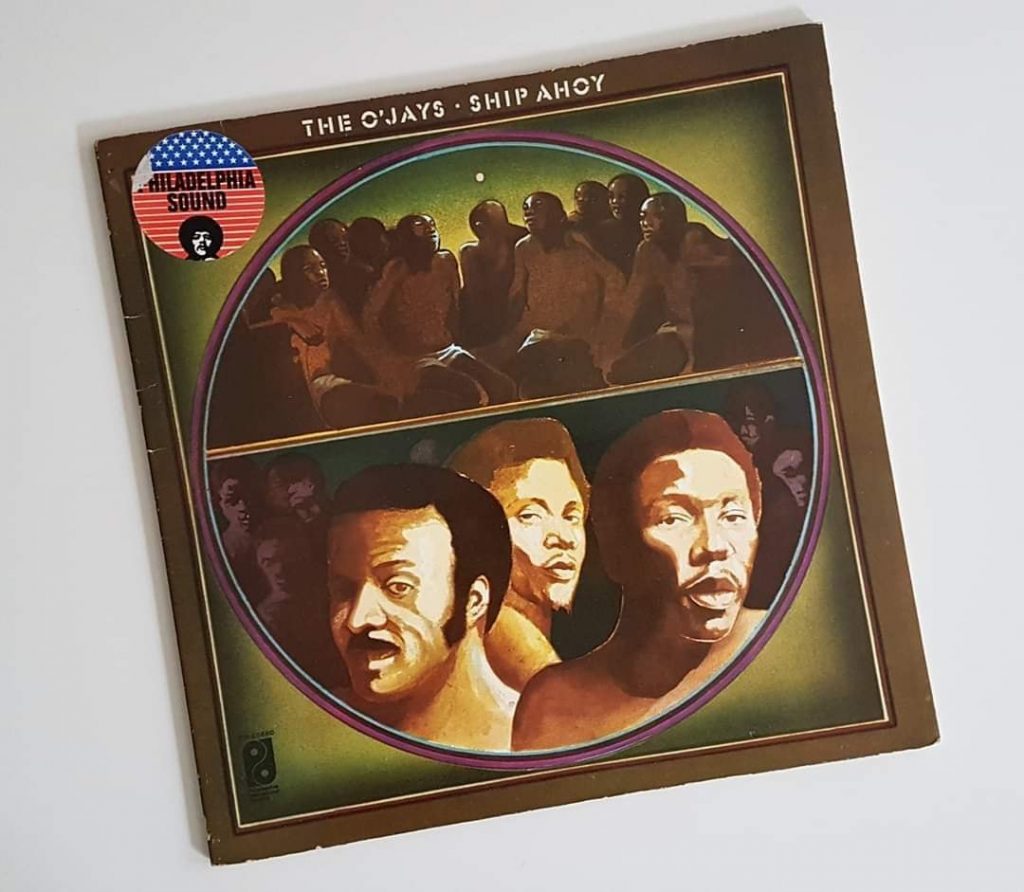Our January reviews include albums by The O’Jays, Patrice Rushen, Chaka Khan, Herbie Hancock and Lionel Richie.
“Ship Ahoy” by The O’Jays (1973)
Indestructible Philly classic from 1973: The O’Jays with “Ship Ahoy”. On this album Gamble and Huff let social criticism flow into ountstanding compositions. Harmonies, production and arrangements are sublime. Working with arranger Thom Bell, Bobby Martin and Philadelphia International Records’ house band MFSB, the trio, formed in 1958, crafted a remarkable work that built on the success of its predecessor, “Back Stabbers”

“Pizzazz” by Patrice Rushen (1979)
Rarely did the name of an album fit better with the content than in the case of Patrice Rushen’s second Elektra album “Pizzazz” from 1979. May jazz purists and critics agitated against her R&B ambitions, music wunderkind Rushen pursued her goal of creating sophisticated R&B masterpieces full of verve. On “Pizzazz” Rushen blended soulful, introspective ballads (outstanding: “Settle For My Love”) with jazzy George Duke and Earth, Wind & Fire influenced uptempo songs. The uplifting single “Haven’t You Heard” was a top 10 hit in the US R&B charts and became one of Rushen’s biggest hits. “Pizzazz” is an excellent and timeless album that influenced early 80s R&B. A masterpiece from the golden era of the genre.

“What Cha’ Gonna Do for Me” by Chaka Khan (1981)
A new decade had finally begun in 1981 and Chaka Khan demonstrated with “What Cha’ Gonna Do for Me” that she was a virtuoso of urban R&B at the beginning of the 80s. Her third solo album, recorded in Montreux with several members of the Average White Band (who contributed with the title-track one of the best songs of the record that topped the US R&B charts), Gregory Phillanganes, who contributed a fantastic synth work on the Beatles cover “We Can Work It Out”, Herbie Hancock, Dizzy Gillespie (“And The Melody Still Lingers On (Night in Tunisia)”), Anthony Jackson and Steve Ferrone, to name only a few, and produced by Arif Mardin convinced with a powerful fresh production, excellent song material and superb vocals. “What Cha’ Gonna Do for Me” showed that Chaka Khan continued to play in the top league in the new decade and demonstrated that she was still a musical force of nature.

“Lite Me Up” by Herbie Hancock (1982)
With his 33rd album (!) “Lite Me Up” Herbie Hancock reached the peak of his efforts to merge jazz, R&B and pop in 1982. Like jazz crossover artists such as George Duke or Patrice Rushen, Hancock flirted with the world of pop mainstream in the early 80s. Not least after his guest appearance on Quincy Jones’ successful album “The Dude”, he had a clear idea with which collaborators he wanted to achieve his aim. The great late Rod Temperton, ex-Heatwave member and Quincy Jones’ “right hand”, contributed to six of the album’s eight recordings and made “Lite Me Up” a more cohesive work than its predecessor. Hancock also followed Quincy in the selection of guest musicians, hiring guitarist David Williams, bassist Louis Johnson and drummer John Robinson – Jones’ core rhythm section of the early 80s. Hancock also relied on the West Coast elite for the rest of the cast: Richard Page, Bill Champlin, Steve Lukather, Jay Graydon, David Foster, Jerry Hey and Jeff Porcaro are just a few of the artists who contributed to “Lite Me Up”. With the Jay Graydon-David Foster ballad “Paradise” Hancock even recorded a West Coast evergreen. For the first time it was not Dave Rubinson, but Hancock himself who took over most of the production. For the dancefloor anthem “Can’t Hide Your Love” he let Narada Michael Walden take over the controls of the mixing console. The biggest hit of the album, “Gettin’ To The Good Part”, cannot deny the influence of Steely Dan’s “Gaucho”. The album ends with “Give It All Your Heart”, a great vocoder duet between Hancock and Patrice Rushen. “Lite Me Up” always stood in the shadow of “Future Shock” released the following year and was shunned by most jazz purists – wrongly. Like Patrice Rushen’s “Straight from the Heart” or George Duke’s “Dream On” from the same year, the album belongs to a series of albums that fused jazz, funk and pop with joy of playing and skill to irresistible, sophisticated and at the same time radio-friendly music. It is worthwhile to listen again!

“Can’t Slow Down” by Lionel Richie (1983)
This album would not have been possible without Michael Jackson’s “Thriller”. After the tremendous success of his former Motown colleague Lionel Richie dissected “Thriller” and created his own commercial mix of slow grooves, catchy pop songs, smooth ballads and the right amount of AOR – supported by the producers David Foster and James Anthony Carmichael. Richie’s second solo release “Can’t Slow Down” became one of the big crossover platinum albums of the 80s. Each of its five singles – “Hello”, “All Night Long”, “Penny Lover”, “Stuck on You” and “Running with the Night” – reached the US top ten. “Can’t Slow Down” is a smooth and timeless masterpiece!


